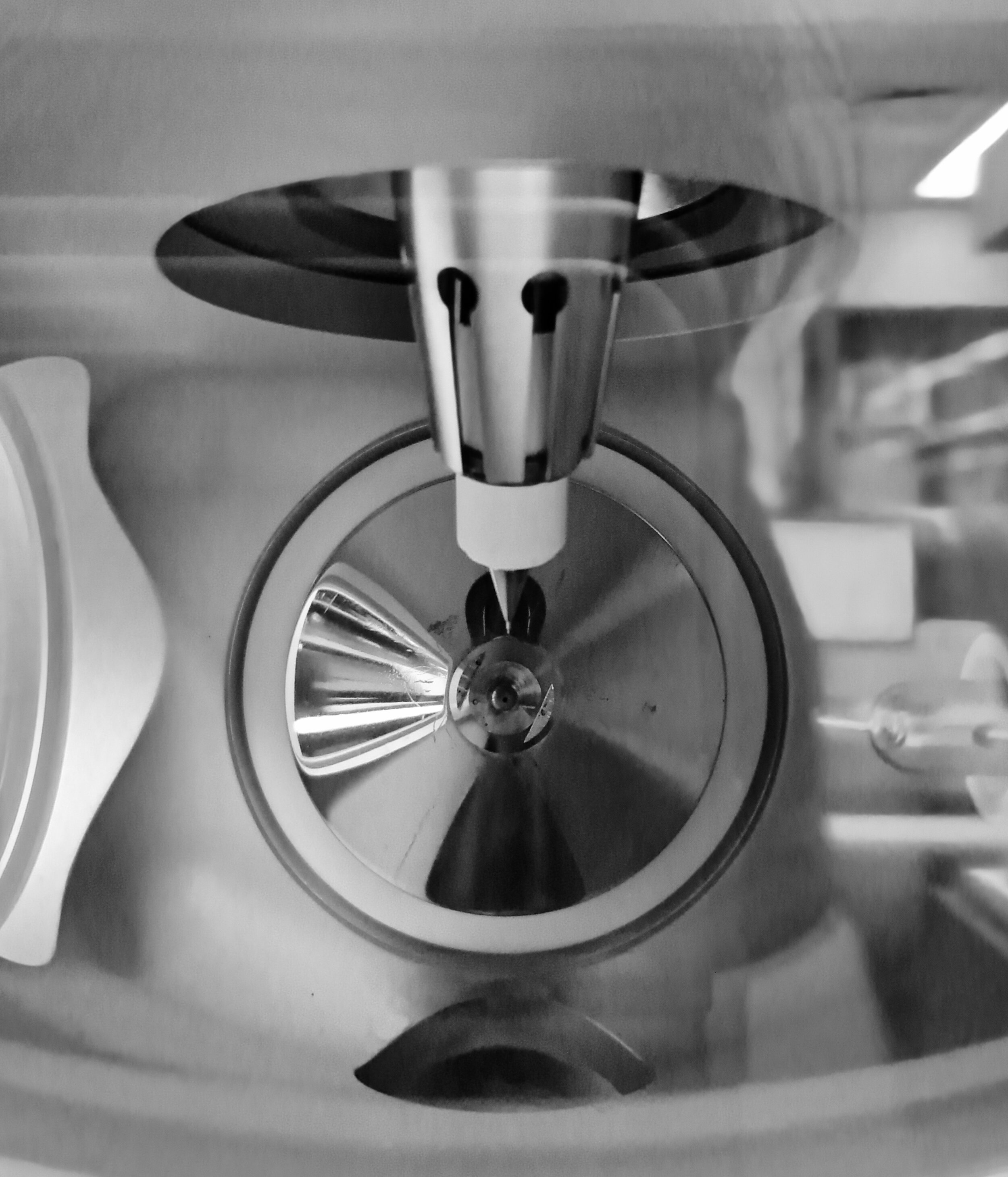
Academic Research
The potential of integrative structural biology inspires us to develop new concepts and technologies in structural proteomics. We then apply these tools in a collaborative environment, to help understand the mechanisms of DNA maintenance. Our innovations are supported by close partnerships with industry, generating commercial products and experimental therapies. Some of our active project areas are highlighted below.
Structural Proteomics
We are interested in understanding how governing principles behind molecular interactions serve to organize protein function at a scale beyond that of the individual protein. Using the tools of proteomics, structural biology and computational modeling, we study structure-function relationships in large multicomponent protein systems, with a view to understanding how function can be regulated at this “mesoscale”. To this end, our group specializes in biological mass spectrometry. We are actively involved in developing the technology as a key provider of modeling data and work collaboratively to move structure determination closer to cellular-level activity. One of our main strategies involves the use of bioconjugation, to install mass-measurable labels that “code” for key structural data.
Hydrogen/Deuterium Exchange Mass Spectrometry (HX-MS)
One particularly powerful chemistry involves hydrogen/deuterium exchange, using heavy water. Imagine a “reagent-less” assay that can track any protein function with residue-level resolution, through backbone dynamics. The method uses bottom-up proteomics concepts, but is not used for complex samples. Can we transform this technology into a truly proteome-competent method?
Crosslinking Mass Spectrometry (XL-MS)
Chemical crosslinks are like “molecular rulers” that measure distances between two points in (or between) proteins. Conceptually, such measurements could be used to model protein structure and even ultralarge interactomes. How can we install and detect these rulers to support accurate distance measurements in the cell and determine structure of the interactome?
Covalent Labeling Mass Spectrometry (CL-MS)
A natural complement to HX-MS, this method uses fast-acting chemical reactions to mark protein topography with chemical tags, principally through side-chain labeling. How can we use this versatile approach to probe changes in protein conformation and even support a new method for proximity proteomics?
Computational proteomics
Mass spectrometers are extremely sensitive tools that generate large multidimensional datasets. Extracting structural meaning from these datasets is complicated, requiring advanced signal processing routines, machine learning, and cutting-edge software architecture. It is worth the effort. We develop novel strategies to extract accurate structural restraints and embed them in software that is usable by the nonexpert.
The Mass Spec Studio
The ultimate software development framework for all structural mass spectrometry applications. The product of 10+ years of effort, the “Studio” has plugins for proteome-scale crosslink detection, automated deuteration analysis and covalent label quantitation, as well as powerful proteomics analysis toolsets. Check it out and join the development team!
Integrative modeling with multiple data sources
How best should mass spectrometry data be combined with cryo-EM structures, AI models, crystallographic structures and other datasets to generate higher-order structures? We partner with computational biologists to produce accurate, data-driven structures of ultracomplex protein systems.
Structure-function analysis of DNA maintenance mechanisms
The DNA in our cells are actively transcribed, translated, replicated and repaired using intricate protein machinery. We seek to understand how multiprotein complexes coordinate key processing steps in the maintenance of genomic sequence. Specifically, we collaborate with local and international research groups to help understand the processes involved in DNA double-strand break repair, using our advanced capabilities in structural mass spectrometry. We are also interested in how cells regulate mitosis through the regulation of the mitotic spindle. In both cases, an improved understanding of mechanism will create opportunities to develop novel anti-cancer therapeutics.
End-bridging complex
Eukaryotic cells can repair DNA double strand breaks through a number of mechanisms, including end resection-mediated pathways (like homologous recombination) and non-homologous end-joining (NHEJ). The choice of repair mechanism has an enormous influence over the stability of the genome and thus the development of cancer. How is a given pathway chosen? This is ultimately influenced by higher-order structure. We study these complexes and their regulation with multiple collaborators.
Non-homologous end joining (NHEJ)
As an example, what proteins comprise the essential complexes for NHEJ, and how are they coordinated to repair lesions in DNA induced by (among other things) ionizing radiation? Building an accurate structural model of this essential repair mechanism is key to understanding an essential biological process and should open up new anticancer therapeutic targets. This is a collaborative project with the lab of Dr. Susan Lees-Miller.
Mitotic regulation through microtubule dynamics
The mitotic spindle is a structure that forms during cell division and separates duplicated chromosomes. The structure is dominated by dynamic microtubules that engage chromosomes at their centromeres and provide the separation force needed for cell division. Exquisitely complex structures sit a the leading (+) end of microtubules to regulate this behavior. We study how proteins engage the microtubule lattice and adjust their force-generating properties.









